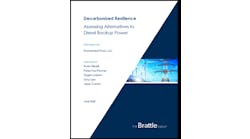Data Center Demand: Hyperscale Action is Robust, But Enterprise Buying Slows
More than six months into the COVID-19 pandemic, data center demand is bifurcated, with robust buying by hyperscale operators and cloud platforms, and a slowdown in spending by many enterprise users. As a result, pandemic-driven leasing activity has been concentrated in major cloud markets.
As service providers scramble to keep pace with hyperscale demand, they say enterprise customers are cautious about short-term needs as they manage through the pandemic. The impact on the providers has been limited thus far, and analysts see a silver lining within the enterprise buying slowdown, as the pandemic accelerates business automation projects for the “next normal.”
Gartner predicts an overall 10.3% decline in data center spending in 2020 due to restricted cash flow during the pandemic, but its latest forecast expects the overall market to rebound in 2021 , growing 6 percent to reach $200 billion and grow year-over-year through 2024. The research firm’s projections encompass both hyperscale and enterprise, but it sees very different demand patterns in those sectors.
“Gartner expects larger enterprise data centers sites to hit pause temporarily and then resume expansion plans later this year or early next,” said Naveen Mishra, Gartner senior research director. “However, hyperscalers will continue with their global expansion plans due to continued investments in public cloud.”
Hyperscale Demand Lifts Wholesale Market
In our first assessment of COVID-19’s impact on demand back in April, we noted that the pandemic has been “a defining moment for the cloud. … The data center industry has served as the backstop for the global economy, supporting a massive shift to online services for businesses, schools and non-profits.”
Most of the increased demand for online services has been supported by cloud infrastructure. That has translated into strong business for wholesale providers, who filled about 135 megawatts of data center capacity in the first half of 2020, according to reporting from CBRE, with most of that activity focused on Northern Virginia and other cloud business hubs.
“Most of the demand in H1 was from hyperscale companies, cloud companies and content providers, largely due to businesses facing remote-working mandates and content providers facing increased demand from viewers,” CBRE said in its analysis.
Cushman & Wakefield had similar conclusions. “Use of cloud services have increased dramatically, with Microsoft reporting millions of new users on their Teams platform, Netflix reaching new records in viewership, Zoom growing to 200 million users from 10 million, and online gaming platforms enjoying a large number of novice players,” said a Cushman report.
“You’re seeing more people logging on to platforms that run on hyperscale clouds, and those clouds consume more space and power and network capacity, and that translates to a positive impact for the supporting infrastructure,” said Phil Shih, Managing Director of Structure Research, in a recent presentation.
“I think there’s some striking parallels to the 2008-09 financial crisis, when Internet infrastructure did well and cloud consumption just continued to grow,” Shih added. “I think you’re seeing the same dynamic happen today. Internet infrastructure is critical, and I think it’s top of mind for decision makers.”
Enterprise Spending in Flux
As hyperscale platforms race to meet demand, many enterprises are facing tougher decisions on spending. The pandemic’s impact has varied by industry, with verticals like travel, hospitality and retail being particularly hard-hit by lockdowns. With key sectors in survival mode, many companies are holding off on new investment.
“The priority for most companies in 2020 is keeping the lights on, so data center growth is generally being pushed back until the market enters the recovery period,” said Gartner’s Mishra. “Much of the reduced demand in 2020 is expected to return in 2021 when staff can physically be onsite. For now, all data center infrastructure segments will be subject to cost containment measures and enterprise buyers are expected to extend life cycles of installed equipment.”
How extensive is the impact? Structure’s Shih notes that many public data center companies are disclosing a “vertical exposure” number. “A number of them say that 5% of their revenue is exposed to some of those highly-impacted verticals,” he said. “We have not seen anything that’s over 10 percent.”
One issue is that the pandemic has disrupted a critical component of the sales process: The data center tour.
“The lack of in-person meetings has frustrated the normal sales cycle, but has also led to innovation, as datacenter providers virtualized datacenter tours,” noted 451 Research. “This may add a quarter’s delay to the typical sales cycle, though we have heard from many providers that demand has strengthened since March or April, so sales may not actually decline over the course of the year as the industry digests pent-up demand.”
Tension and Transformation
Equinix CEO Charles Meyers says enterprises face a dilemma: They want to spend cautiously, even as the pandemic places a premium on digital solutions and contactless delivery of goods and services.
“COVID continues to shift enterprise spending patterns resulting in increased demand for various cloud-based services including telephony, messaging and conferencing,” Meyers said in a recent earnings call. “I do think that we’ve seen some projects have delayed decision-making, and things pushed out further in the pipeline. But I think that’s been offset to some degree by a broader awareness of digital transformation, even in sectors of the economy that are meaningfully impacted by COVID.”
“Enterprise customers are clearly seeing the value in digitizing their business in today’s environment,” said Steve Smith, Chief Revenue Officer at CoreSite. “Where the challenge has been is that they are grappling with their own challenges operating in this environment – employee distance engagement, their customers, their supply chain – along with kicking off the new IT project that needs to be evaluated. That just takes more time, and some of those challenges have made (the sales cycle) a bit longer than what we’ve seen in prior cycles.”
Other customers have accelerated their IT projects to adapt to the changed business landscape. “Some of the larger RFPs are actually picking up speed because the COVID pandemic has brought to light infrastructure weaknesses amongst some of the enterprise clients,” said Gabe Nacht, Chief Financial Officer at Switch. “They now have to deal with an entire workforce working remotely and they’re realizing that their infrastructure just isn’t capable of supporting it.”
Equinix CEO Meyers believes a pandemic-ready infrastructure will quickly become a competitive advantage.
“I think those companies that were further ahead in their digital strategies are weathering the storm better,” said Meyers. “I think that’s leading people to say ‘we’ve got to make sure we’re making the digital investments that are necessary.'”
Wholesale Markets Show Strength
The hyperscale strength and enterprise caution has implications for data center business models. It’s good news for wholesale data center operators, who lease dedicated data halls or entire buildings, and target large cloud and SaaS customers. The picture is more mixed in retail colocation, which leases IT space in cabinets and cages and has a stronger focus on enterprise customers.
Not surprisingly, the strongest geographic markets are those with strong wholesale activity, especially Northern Virginia. Cushman & Wakefield reported 237 megawatts of absorption in Northern Virginia in the first half of 2020.
The COVID-19 Pandemic and the Data Center Industry
“Northern Virginia continues to impress, leading the globe with the best half of absorption on record in the first half of 2020 thanks to major leases from a variety of cloud services providers,” the company said.
CBRE assessed the Northern Virginia absorption at 93.2 megawatts. CBRE also saw strong growth in other hyperscale markets, including 13 MWs in leasing in Central Washington, and signs of strong pre-leasing activity in Portland/Hillsboro and Greater Phoenix.
That’s reflected in the Cushman & Wakefield data, which finds 27 MWs of leasing in Phoenix and 21 MWs in Portland, which is “gaining increased interest for workloads leaving California, thanks to the lower cost construction and power on offer, along with strong connectivity to Asia via coastal landing stations for undersea cables.”






